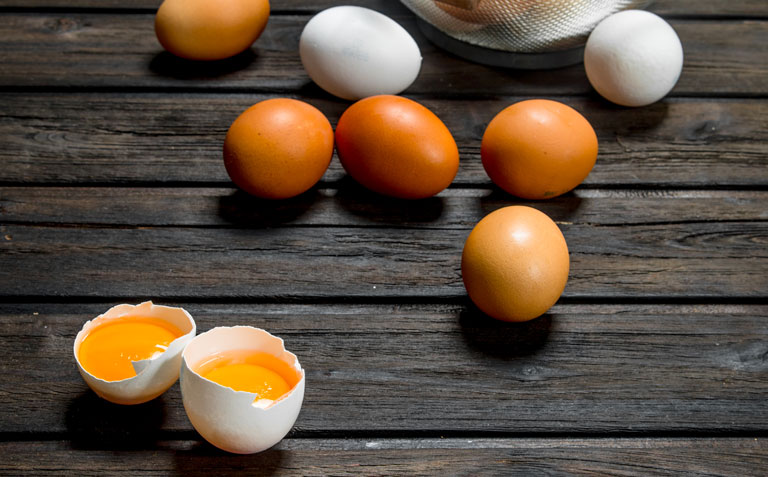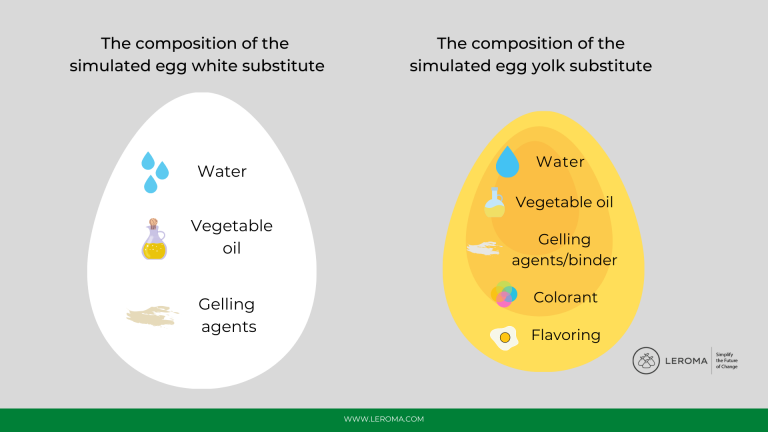Egg, but vegan please
Eggs have been an indispensable part of our nutrition for centuries. They hold a considerable variety of uses, whether in cooking and baking or for various egg dishes such as fried egg, scrambled egg or poached egg.
Consumers who want to avoid the consumption of animal eggs, such as allergy sufferers, people who want to reduce their cholesterol intake and especially vegans, can meanwhile find some egg substitute products on the market.
However, these products, for example egg substitute powder, are mainly used as a substitute in baking. The demand for egg substitute products that taste, look, and feel like real eggs and, in addition, can be processed into fried eggs and the like, is on the rise.
We at LEROMA are interested in any trends in the food industry and during our research we came across a patent which we would like to present to you in more detail in this context.
Simulated cooked egg (patented process)
The simulated boiled egg is an invention that can replace natural eggs in many ways and is roughly equivalent to a boiled chicken egg. It consists of a simulated egg white portion and a simulated egg yolk portion. Both parts can be formed into the desired shape to create a "whole egg".
In the following, we present the composition and the manufacturing process of the simulated egg in detail.
The composition of the simulated egg white substitute
The egg white substitute consists mainly of
water, supplemented by small amounts of
vegetable oil, gelling agents such as low methoxyl pectin and an emulsifier such as dicalcium phosphate. The amount of ingredients may vary, but generally the water content is more than three times that of all other components combined.
In addition to the amount, the type of ingredients included also varies according to preference and intended use. Thus, the vegetable oil used can be coconut oil as well as cottonseed oil, peanut oil or safflower oil. The oil is important in giving the simulated egg white the appearance and texture of a natural egg.
Besides, to low methoxyl pectin, other gelling agents that can be used include carrageenans, alginates, gelatin, starches and other thickeners or mixtures of, for example, gelatin and pectin. The type of gelling agent to be used depends on the intended use. If the simulated egg is to be heated before eating, for example, for poached or fried eggs, the gelling agent must be heat resistant so that it remains in an advanced or solid gel state. If the simulated egg is to be used as a garnish for cold salads, the gel does not need to be heat resistant.
Next to the above ingredients, the egg white substitute may also contain other materials, such as vitamin supplements, minerals and preservatives or freshening agents. Citric acid has proven to be a particularly suitable freshening agent, as it lowers the pH of the protein substitute and promotes dispersion and solubilization of the other materials. In addition to citric acid, BIIA, BI-IT, potassium sorbate and sodium benzoate can also be used. Generally, preservatives, if any, are present in smaller amounts than the other components.



